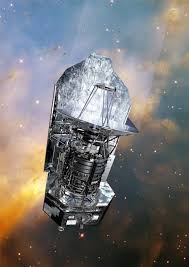- Understanding Space-Grade Linux
- Key Features of Space-Grade Linux
- The Development Process
- Real-World Applications
- Future Prospects
- Conclusion

In an age where technology drives exploration beyond our planet, the demand for operating systems that can withstand the rigors of space environments is crucial. As spacecraft embark on missions that can span years, the need for a reliable, resilient operating system is more pressing than ever. Enter Space-Grade Linux, a tailored version of the Linux operating system that has been meticulously developed to meet the unique challenges posed by space.
Understanding Space-Grade Linux
At its core, Space-Grade Linux is designed to function in extreme conditions where conventional operating systems often fail. These conditions include intense radiation, extreme temperatures, and vacuum environments, which can quickly degrade typical computer hardware and software. By adapting Linux — a highly flexible and widely-used operating system — researchers and engineers aim to create a robust platform capable of performing critical tasks during long-duration space missions.
Key Features of Space-Grade Linux
-
Radiation Hardening: One of the significant challenges in space environments is radiation exposure. Space-Grade Linux incorporates features that mitigate the effects of ionizing radiation on hardware, significantly reducing the likelihood of errors and system crashes. Techniques such as error detection and correction, alongside redundancy, help ensure continuous operation.
-
Real-Time Processing: Space missions often require real-time data processing to respond swiftly to dynamic conditions. Enhanced scheduling algorithms in Space-Grade Linux facilitate timely task execution, which is essential for maneuvering spacecraft and conducting scientific experiments without delay.
-
Modular Design: Space-Grade Linux benefits from a modular approach, allowing developers to customize and streamline the operating system for specific missions. This flexibility is particularly advantageous, enabling the installation of only the necessary components, thus optimizing performance and resource usage.
The Development Process
Creating a Space-Grade Linux operating system is not a straightforward task. It involves rigorous testing and validation processes to ensure each component can operate reliably in the harsh conditions of space. Development teams simulate extreme environments, testing for system failures, performance bottlenecks, and the overall robustness of the operating system under various scenarios.
Collaboration among various stakeholders, including government agencies, private aerospace firms, and academic institutions, plays a crucial role in advancing Space-Grade Linux. Open-source contributions help refine the software and enhance its capabilities, ensuring it evolves with emerging space technology.
Real-World Applications
The applications of Space-Grade Linux are vast and varied. From satellite systems monitoring Earth’s climate to rover systems exploring distant planets, Space-Grade Linux serves as the backbone for numerous space ventures. Notable missions, including NASA’s deep space explorations and ESA’s satellite programs, have successfully deployed this specialized OS, demonstrating its reliability under extreme conditions.
Future Prospects
As space exploration ambitions grow — with renewed interest in Mars, asteroid mining, and potential human colonization of other planets — Space-Grade Linux will continue to evolve. Innovations in artificial intelligence, machine learning, and automation will likely be integrated, enhancing the OS’s capabilities to manage complexities autonomously.
Additionally, with the rise of commercial space ventures, the demand for a secure, resilient OS will be high. ensuring both safety and mission success will remain a priority in developing future iterations of Space-Grade Linux.
Conclusion
Space exploration stands at the brink of a new age, characterized by advancements in technology and a heightened understanding of our universe. At the heart of these missions lies Space-Grade Linux, a groundbreaking operating system engineered for the harsh realities of space. As it continues to evolve, Space-Grade Linux will not only serve as a vital tool for current exploratory missions but will also pave the way for future endeavors, pushing the boundaries of human capability in space.